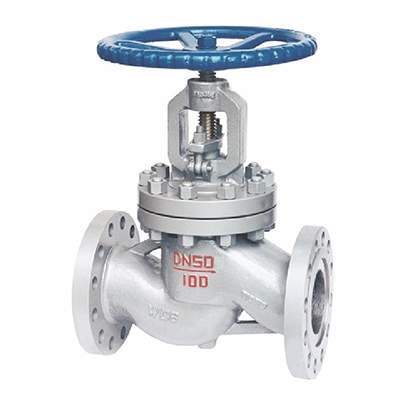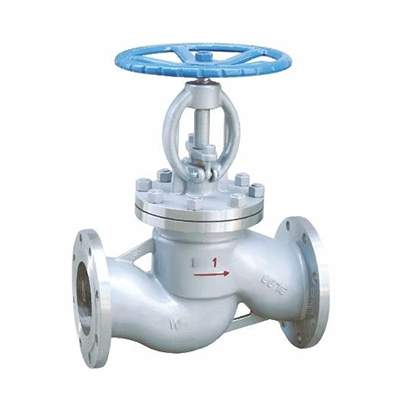Welcome to My Blog!
Before we dive into the content, if you’re interested in our products or have any questions, please feel free to visit our Contact Us page on the website. Our team is ready to assist you with inquiries, orders, or any support you may need.
Now, let’s get started on our journey together. I hope you find the content here insightful, engaging, and valuable.
Selecting the right fire safe globe valve is critical for ensuring the safety, efficiency, and compliance of chemical processing systems. Fire safe globe valves are designed to maintain integrity during fire exposure, preventing leakage and catastrophic failures. In chemical plants, where flammable, corrosive, or high-temperature fluids are handled, the choice of valve can significantly impact operational safety, regulatory compliance, and long-term maintenance costs. In this article, we will provide a detailed guide on how to choose the best fire safe globe valve for your chemical plant, covering design features, material selection, performance parameters, standards, and installation practices.
Understanding Fire Safe Globe Valves

What Is a Fire Safe Globe Valve?
A fire safe globe valve is a specialized valve engineered to maintain its sealing capabilities during high-temperature fire conditions. Unlike standard globe valves, fire safe valves prevent leakage when exposed to fire, thanks to advanced sealing materials and robust construction. They are designed not only to stop fluid flow but also to withstand thermal expansion, prevent deformation, and resist pressure surges in emergency situations.
How Does a Fire Safe Globe Valve Work?
Fire safe globe valves utilize dual sealing systems. The primary seal, typically a soft material such as PTFE or elastomer, ensures tight closure under normal operation. The secondary seal, often a metal-to-metal or graphite seal, activates during high-temperature conditions when the primary seal might fail. This design ensures the valve maintains pressure containment and prevents leakage, protecting both personnel and equipment.
Why Fire Safety Matters in the Chemical Industry
Chemical plants frequently handle hazardous media such as acids, solvents, flammable gases, and high-temperature steam. A valve failure in these environments can lead to catastrophic incidents, including fires, explosions, and environmental contamination. Installing fire safe globe valves mitigates these risks, ensures compliance with fire safety codes, and safeguards plant assets. In addition, insurance providers often require fire safe valves for critical process lines.
Key Fire Safety Standards and Certifications
API 6FA and API 607 Fire Test Standards
API 6FA and API 607 are the most widely recognized fire safety standards for valves. These standards define rigorous testing procedures, including fire exposure duration, thermal cycling, and internal pressure checks. Valves that pass these tests are certified as capable of maintaining integrity during fire emergencies, which is essential for chemical plant compliance.
ISO 10497: International Fire Testing Standard for Valves
ISO 10497 provides internationally accepted fire testing requirements, covering both metal and soft-seated valves. Compliance with ISO 10497 ensures that a valve can withstand extreme temperatures without leaking, making it suitable for global chemical processing applications.
How to Verify a Valve’s Fire Safe Certification
Always request official certification documents from suppliers. Check that the certificate references the applicable standard and verifies testing of both the valve body and seat. Additionally, verify whether the testing included typical process conditions, such as chemical exposure, pressure rating, and operating temperature.
Material Selection for Fire Safe Globe Valves
Common Materials: Stainless Steel, Carbon Steel, Alloy Steel
Material selection is critical for both fire safety and chemical resistance. Stainless steel is preferred for its corrosion resistance in acidic or caustic environments. Carbon steel offers high mechanical strength for high-pressure lines, while alloy steels are suitable for elevated temperature applications, such as steam or hot chemical processes.
Corrosion Resistance and Chemical Compatibility
A fire safe globe valve must withstand the chemical composition of the media. Compatibility charts should be reviewed to ensure that the selected material resists corrosion and degradation over time, which could otherwise compromise fire safety performance.
Sealing Materials: Graphite, PTFE, Metal-to-Metal
Sealing materials must maintain integrity under both normal and fire conditions. Graphite is highly fire-resistant and suitable for high-temperature applications. PTFE provides excellent chemical resistance but is limited to lower temperatures. Metal-to-metal seals provide robust fire protection for extreme conditions and can prevent leakage even if the primary soft seal fails.
Design Features That Ensure Fire Safety
Double-Sealing Structure for Fire Resistance
Fire safe globe valves employ a double-sealing structure to ensure uninterrupted operation during emergencies. The primary seal handles routine operation, while the secondary fire-resistant seal ensures containment in case of high-temperature exposure.
Stem Packing and Body Gasket Fire Protection
High-quality graphite stem packing and reinforced body gaskets prevent leakage along the stem or body flanges during fire events. These components are essential for preventing the valve from becoming a source of fire or chemical leakage.
Anti-Blowout Stem Design and Seat Integrity
The anti-blowout stem design ensures that the stem cannot be ejected under internal pressure. Reinforced valve seats provide consistent sealing performance even under thermal expansion or mechanical stress, which is critical in chemical process pipelines.
Performance Parameters to Consider
Temperature and Pressure Ratings
Always select valves rated for the maximum expected temperature and pressure of your chemical process. Fire safe globe valves often support temperatures up to 650°C and pressures ranging from ANSI Class 150 to Class 1500, accommodating a wide range of chemical applications.
Flow Coefficient (Cv) and Valve Sizing
Correct sizing ensures the valve meets system flow requirements without causing excessive pressure drops. The flow coefficient (Cv) should be calculated based on process flow, fluid density, and pressure to select the optimal valve size.
End Connections: Flanged, Threaded, or Welded
End connections affect installation, maintenance, and leak integrity. Flanged connections allow easy removal and maintenance, threaded connections suit smaller pipelines, and welded connections offer permanent, leak-free solutions for critical process lines.
Application Considerations for Chemical Plants
Fire Safe Globe Valve Use in Corrosive or Hazardous Media
Valves handling corrosive chemicals require materials resistant to chemical attack. Selecting a fire safe valve with corrosion-resistant body and sealing materials ensures both fire protection and chemical durability.
Suitability for Steam, Acids, and Flammable Fluids
High-temperature steam lines and pipelines carrying flammable liquids demand fire safe valves with high thermal tolerance and robust sealing. Proper selection prevents catastrophic leaks and fire propagation in emergency situations.
Fire Safe Globe Valves in High-Temperature Pipelines
For applications such as steam generation or chemical reactions, fire safe globe valves must maintain sealing performance at elevated temperatures. Graphite packing and metal-to-metal seat designs are particularly suitable for these conditions.
Installation and Maintenance Best Practices
Proper Installation to Ensure Fire Safety Compliance
Installation should follow manufacturer guidelines, ensuring correct orientation, torque, and alignment. Improper installation can compromise fire safety, leading to potential leaks or valve failure under fire conditions.
Regular Inspection and Maintenance Checklist
Periodic inspection is critical. Check for leaks, stem integrity, seat wear, and gasket condition. Annual fire testing or verification is recommended for high-risk applications to maintain fire safety certification.
Common Issues and Troubleshooting
Common issues include leaks, seat wear, stem corrosion, and packing degradation. Prompt identification and maintenance reduce downtime and prevent fire-related hazards.
Cost and Supplier Evaluation

Factors That Influence Fire Safe Globe Valve Pricing
Valve size, material, fire certification, pressure class, and additional features like actuators affect pricing. Balancing quality, safety, and cost is essential for optimal value.
How to Choose a Reliable Manufacturer or Supplier
Select suppliers with a proven track record, verified certifications, and strong technical support. Consultation with manufacturers ensures valve specifications match your chemical process requirements.
Warranty and After-Sales Support Considerations
Ensure warranty coverage for both fire safety and material performance. Reputable suppliers provide spare parts, technical guidance, and maintenance support to extend the valve’s service life.
Conclusion
Choosing the right fire safe globe valve for chemical processing involves understanding fire safety standards, material selection, valve design, and performance parameters. Proper installation, regular maintenance, and selecting certified suppliers are crucial for ensuring safety and compliance. By carefully evaluating these factors, chemical plant operators can mitigate fire risks, maintain operational integrity, and protect personnel, equipment, and the environment. Fire safe globe valves are not just a regulatory requirement—they are a critical investment in process safety and reliability.
FAQ
What is a fire safe globe valve?
A fire safe globe valve is a valve designed to prevent leakage during fire conditions, using secondary seals like graphite or metal-to-metal to maintain safety and integrity.
How does a fire safe globe valve work?
It operates with a primary soft seal under normal conditions and a fire-resistant secondary seal that activates during high-temperature events to prevent fluid leakage.
Where are fire safe globe valves commonly used?
They are widely used in chemical plants, oil and gas pipelines, high-temperature steam systems, and other industrial processes where fire safety is critical.
What materials are fire safe globe valves made from?
Common materials include stainless steel, carbon steel, alloy steel, and fire-resistant sealing materials such as graphite or metal-to-metal components.
How do I choose the right fire safe globe valve for my chemical process?
Consider factors like process temperature, pressure, chemical compatibility, fire safety certifications (API 6FA, API 607, ISO 10497), and valve sizing for optimal flow control.
Need Help Choosing the Right Fire Safe Globe Valve?
If you’re unsure about which fire safe globe valve is best for your chemical process or industrial system, our experts are here to help. Contact us today for a personalized consultation, and ensure your valve selection meets safety standards and fire protection regulations. Don’t wait until it’s too late—get in touch now to protect your facility, your process, and your people!
